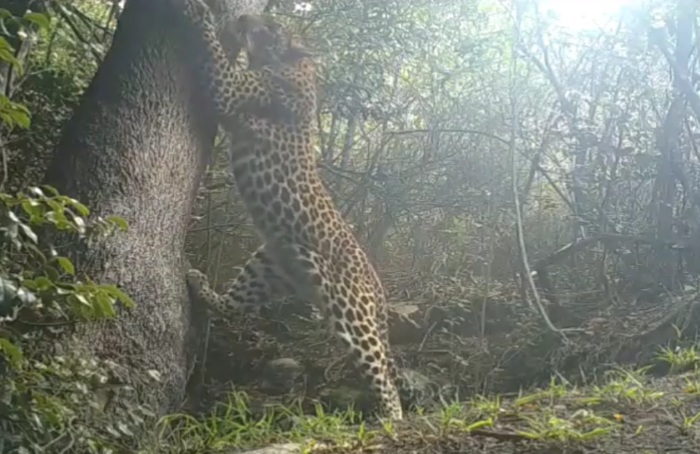Rare footage of a female leopard named Lumka was recently shared by the Walker Bay Fynbos Conservancy (WBFC), as the majestic creature was filmed by one of their camera traps.
Few ever have the pleasure of spotting Cape leopards as the mountainside where they live is vast and they are solitary animals, but a recent video has given animal-lovers some insight into the habits of these beautiful creatures.
In the footage, the healthy female can be seen marking trees in the area as she scratches and rubs up against them. According to the Cape Leopard Trust, the fine specimen in the video is one of less than 1 000 leopards who call this area home in modern times.
The WBFC shared their video to the Cape Leopard Trust Facebook page explaining what the leopard is doing.
According to the post, she is carrying out one of the usual leopard habits of marking trees and areas she is familiar with.
“Leopards are territorial and solitary and do not encounter other leopards very often – especially in the Cape mountains where density is very low. They therefore rely heavily on chemical communication to convey messages about their presence, strength and reproductive state. The volatile chemical compounds in urine, scat and glands can persist for weeks and will thus remain present at a marking site long after the marking animal had left,” says the post.
This chemical communication between leopards mainly relies on scent-marking and scent-rubbing. Leopards have unique scent rubbing glands on their head and cheeks which they use to leave behind their scent, often rubbing their scent higher on trees to make other leopards think they are larger in size.
In the video, the leopard makes a loud grunting sound near the end of the footage, either to attract a suitable mate or tell competitors to back off.
Watch the full video here:
Picture: Facebook

